Jeddah, 1925..

Jeddah, 1925..
More Posts from Sigilheart and Others


Hegel’s Dialectics
Dialectics drives to the “Absolute”,… which is the last, final, and completely all-encompassing or unconditioned concept or form in the relevant subject matter under discussion (logic, phenomenology, ethics/politics and so on). The “Absolute” concept or form is unconditioned because its definition or determination contains all the other concepts or forms that were developed earlier in the dialectical process for that subject matter…We can picture the Absolute Idea, for instance—which is the “Absolute” for logic—as an oval that is filled up with and surrounds numerous, embedded rings of smaller ovals and circles, which represent all of the earlier and less universal determinations from the logical development. [Fig. 1].
Since the “Absolute” concepts for each subject matter lead into one another, when they are taken together, they constitute Hegel’s entire philosophical system, which, as Hegel says, “presents itself therefore as a circle of circles”. We can picture the entire system like this [Fig. 2].
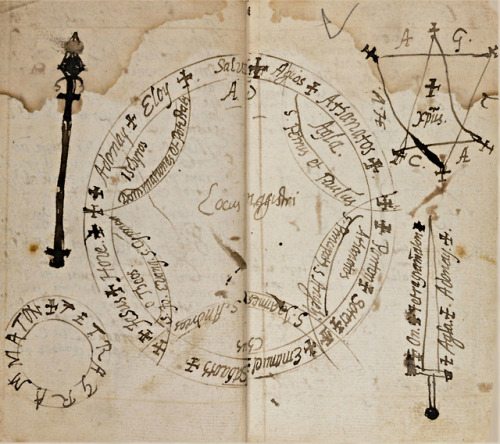








Book of Magical Charms (17th cent.)
This work, penned in England by an unknown author, is a distinctive collection of selected passages from works on magic and various occult arts that describe everything from speaking with spirits, to cheating at dice, to curing a toothache. The book also includes a section of Latin prayers, litanies, and other magical charms that seem to stick more closely to mainstream religious practices.
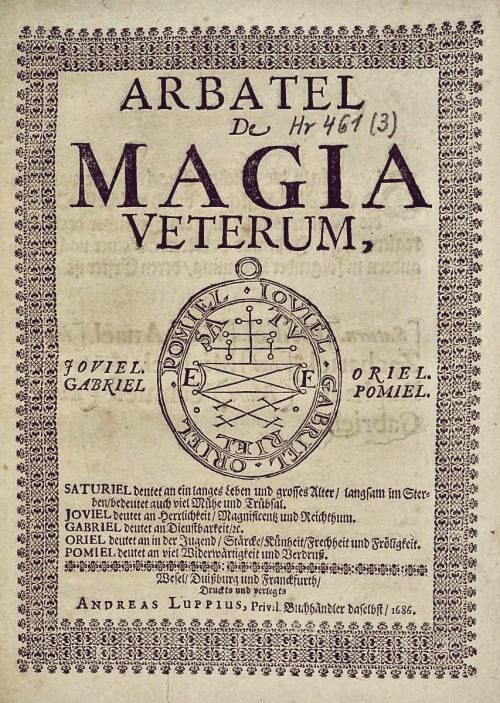
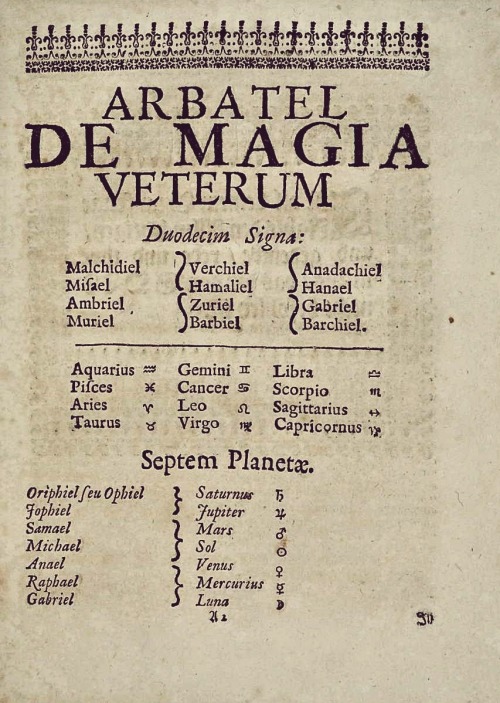

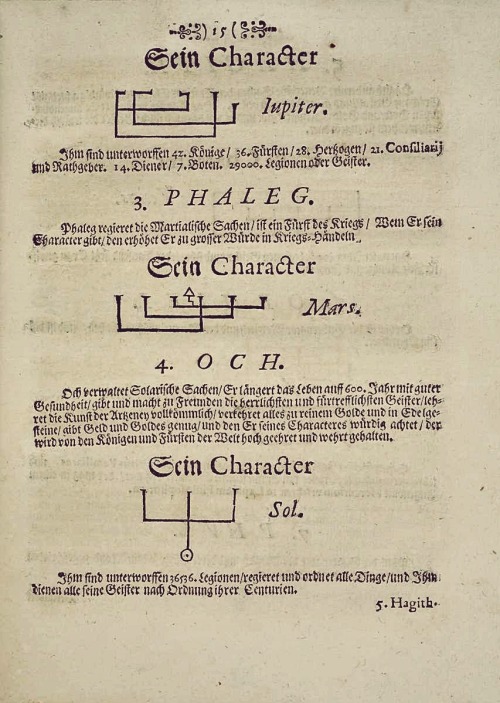
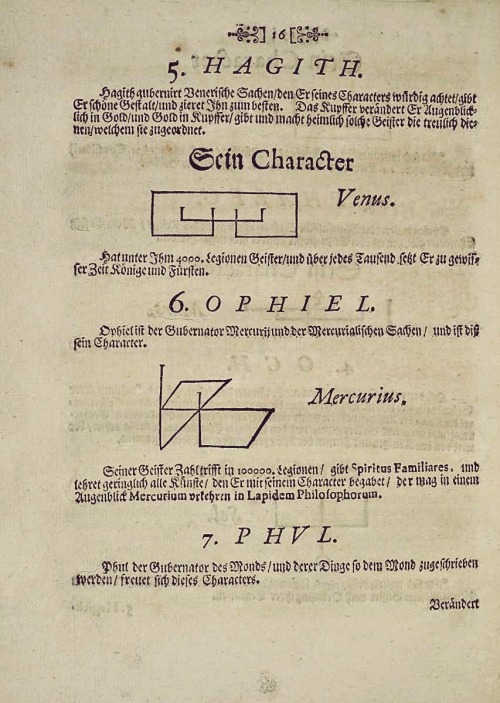
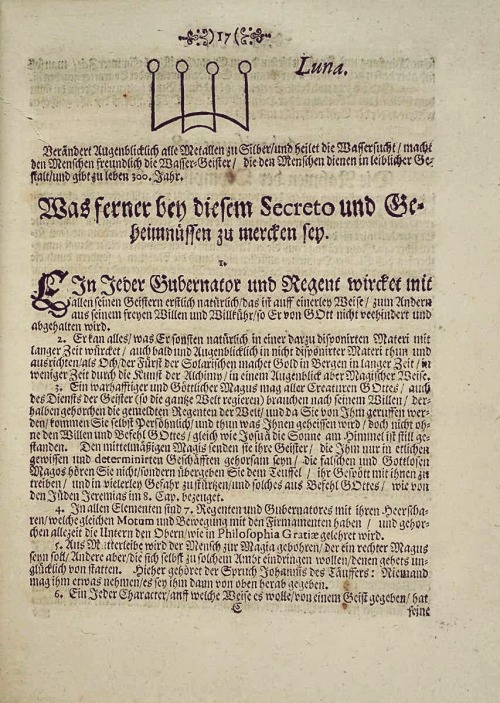
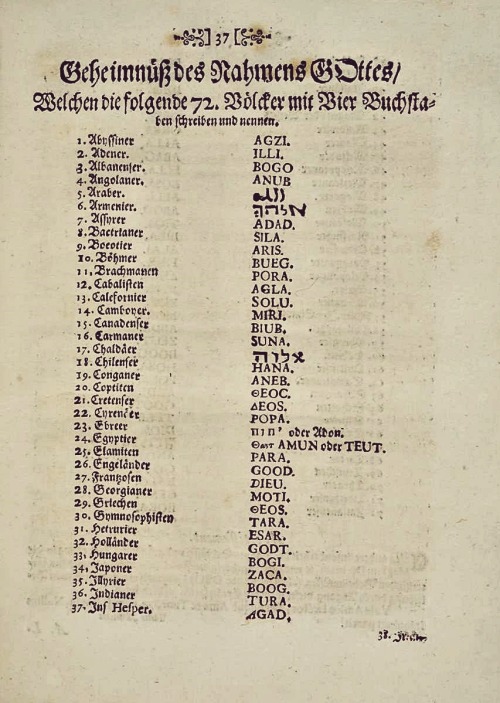
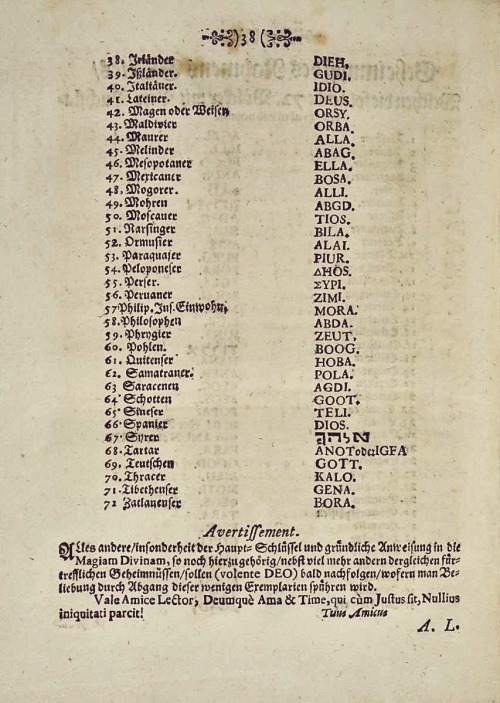
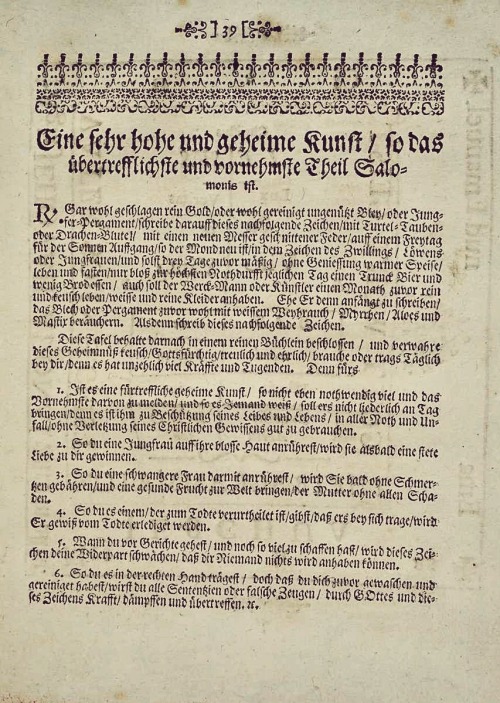
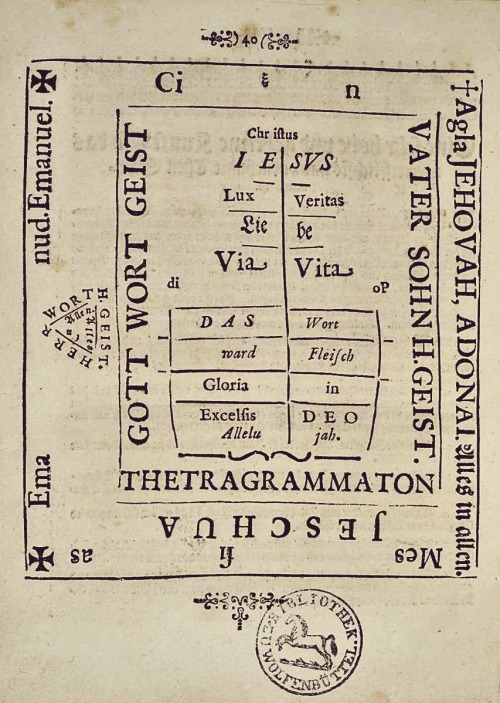
The Arbatel De Magia Veterum (Arbatel: On the Magic of the Ancients) is a grimoire of ceremonial magic that was published in 1575 in Switzerland. It was likely edited by Theodor Zwinger, and published by Pietro Perna. The actual author of the text remains unknown, but scholars suggest Jacques Gohory as a possible candidate.
The Arbatel mainly focuses on the relationship between humanity, celestial hierarchies, and the positive relationship between the two. The Olympian spirits featured in it are entirely unique to this grimoire. Unlike other grimoires, the Arbatel exhorts the magus to remain active in their community (instead of isolating themselves), favoring kindness, charity, and honesty over remote and obscure rituals. The teachings of Swiss alchemist Paracelsus greatly influenced the writing of this work, though it is also deeply rooted in classical culture, Ancient Greek philosophy, the Sibylline oracles and the philosophy of Plotinus.
Originally written in Latin, these selected ten pages come from a later German translation of the work, dated to 1686.

Roberto Assagioli’s Consciousness Egg
The Self is a transpersonal center, a source of essential being, an inner counsellor guiding us to truth, meaning, and purpose. The Self is represented as a star, and appears at the top and bottom at the top of the diagram.

In Gurdjieff’s cosmology, The Universe is represented by the symbol of the Enneagram. The Enneagram itself is composed of three symbols
Russell A. Smith, Gurdjieff: Cosmic Secrets

The continuum of dissociation
Christian Scharfetter, Ego‐Fragmentation in Schizophrenia: A Severe Dissociation of Self‐Experience
-
 sarolune liked this · 1 month ago
sarolune liked this · 1 month ago -
 oknutok liked this · 1 month ago
oknutok liked this · 1 month ago -
 witch-puke liked this · 2 months ago
witch-puke liked this · 2 months ago -
 mopoki liked this · 2 months ago
mopoki liked this · 2 months ago -
 varvunhavuja reblogged this · 2 months ago
varvunhavuja reblogged this · 2 months ago -
 space-silo liked this · 2 months ago
space-silo liked this · 2 months ago -
 thehyperthreshold reblogged this · 2 months ago
thehyperthreshold reblogged this · 2 months ago -
 coeranis reblogged this · 2 months ago
coeranis reblogged this · 2 months ago -
 itsonlyawkwardforyou liked this · 2 months ago
itsonlyawkwardforyou liked this · 2 months ago -
 corneille-moisie reblogged this · 2 months ago
corneille-moisie reblogged this · 2 months ago -
 dirawong liked this · 2 months ago
dirawong liked this · 2 months ago -
 vefja liked this · 4 months ago
vefja liked this · 4 months ago -
 sigilheart reblogged this · 4 months ago
sigilheart reblogged this · 4 months ago -
 americanata reblogged this · 4 months ago
americanata reblogged this · 4 months ago -
 americanata liked this · 4 months ago
americanata liked this · 4 months ago -
 laevisuals liked this · 4 months ago
laevisuals liked this · 4 months ago -
 avondturier liked this · 4 months ago
avondturier liked this · 4 months ago -
 eachacomingbuddha reblogged this · 5 months ago
eachacomingbuddha reblogged this · 5 months ago -
 luminishenca liked this · 5 months ago
luminishenca liked this · 5 months ago -
 weepingwidar liked this · 5 months ago
weepingwidar liked this · 5 months ago -
 auzrithewitch liked this · 5 months ago
auzrithewitch liked this · 5 months ago -
 philipkampp reblogged this · 5 months ago
philipkampp reblogged this · 5 months ago -
 defomed-baby liked this · 5 months ago
defomed-baby liked this · 5 months ago -
 virginxveins reblogged this · 5 months ago
virginxveins reblogged this · 5 months ago -
 elvencryptid liked this · 5 months ago
elvencryptid liked this · 5 months ago -
 area12 reblogged this · 5 months ago
area12 reblogged this · 5 months ago -
 2-amar liked this · 5 months ago
2-amar liked this · 5 months ago -
 finnieforshort liked this · 5 months ago
finnieforshort liked this · 5 months ago -
 omochreach reblogged this · 5 months ago
omochreach reblogged this · 5 months ago -
 toxicfaggot liked this · 5 months ago
toxicfaggot liked this · 5 months ago -
 puppet-of-spite liked this · 5 months ago
puppet-of-spite liked this · 5 months ago -
 rednines reblogged this · 5 months ago
rednines reblogged this · 5 months ago -
 boards-of-kaneda reblogged this · 5 months ago
boards-of-kaneda reblogged this · 5 months ago -
 slurpem reblogged this · 5 months ago
slurpem reblogged this · 5 months ago -
 slurpem liked this · 5 months ago
slurpem liked this · 5 months ago -
 cool-dry-place reblogged this · 5 months ago
cool-dry-place reblogged this · 5 months ago -
 lovehael reblogged this · 5 months ago
lovehael reblogged this · 5 months ago -
 eachacomingbuddha liked this · 5 months ago
eachacomingbuddha liked this · 5 months ago -
 huliepte liked this · 5 months ago
huliepte liked this · 5 months ago -
 sister-ray reblogged this · 5 months ago
sister-ray reblogged this · 5 months ago -
 vvalkinthecircle reblogged this · 5 months ago
vvalkinthecircle reblogged this · 5 months ago -
 vvalkinthecircle liked this · 5 months ago
vvalkinthecircle liked this · 5 months ago -
 nothinglastsforever8 reblogged this · 5 months ago
nothinglastsforever8 reblogged this · 5 months ago -
 nothinglastsforever8 liked this · 5 months ago
nothinglastsforever8 liked this · 5 months ago -
 spejlvendt liked this · 5 months ago
spejlvendt liked this · 5 months ago -
 mona-l1sa liked this · 5 months ago
mona-l1sa liked this · 5 months ago -
 ugli-ly liked this · 5 months ago
ugli-ly liked this · 5 months ago -
 systemes reblogged this · 5 months ago
systemes reblogged this · 5 months ago -
 teddiloid liked this · 5 months ago
teddiloid liked this · 5 months ago




